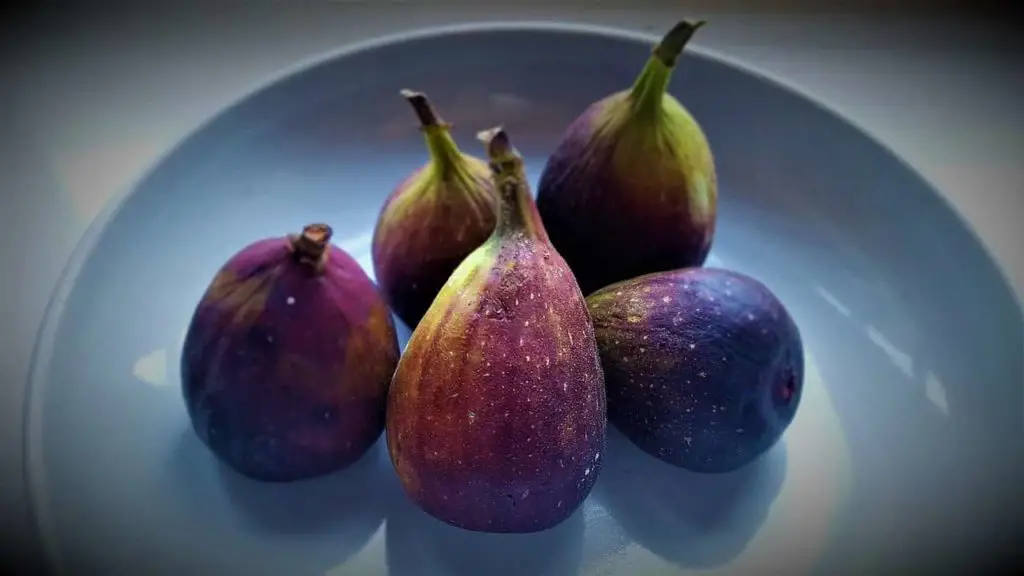Fresh figs are a delicious accompaniment to a myriad of dishes, but you can often end up with more fresh figs than you can eat in one go. Because they contain a lot of sugar, they ripen rapidly, and they also turn very quickly.
You might not be able to pass the aisle with the figs without picking up some fresh ones, promising yourself that you’ll use them all this time.
Maybe there was a great offer on, or you’re lucky enough to have a fruiting fig tree in your yard, and you’ve now got a glut of beautifully fresh figs to enjoy.
Maybe you just love figs, and you want to enjoy them out of season without paying a lot of money for it.
Whatever the reason, you need to find a way to prolong their shelf life. It’s not as simple as simply throwing them into the freezer, however.
There are a few steps you need to do, first, and it helps if you know exactly what happens to figs when you freeze them (see also Can You Freeze Dates).
How Does Freezing Affect Figs?
Similar to kiwis (see also How To Freeze Kiwi), you cannot use thawed figs the same as you would fresh figs, as the texture noticeably changes.
When you freeze a fig, the water contained in the fruit expands. This breaks down part of the structure of the fig, and once you thaw it, it becomes mushier.

While you can use fresh figs on top of a salad, using thawed figs would result in a very disappointing, soggy salad.
While freezing figs does limit how you use them, that doesn’t mean it isn’t worth doing. Figs that have been frozen are perfect for baking, such as sweet breads or muffins.
They are also great additions to jams (see also How To Freeze Jam), homemade ice cream, and smoothies.
Using thawed figs can also lessen the time the whole dish needs, as some structure within the fruit has already been broken down by the freezing process.
How To Freeze Figs
It’s fairly easy to freeze figs, but you shouldn’t just throw them straight into the freezer.
There are two methods of freezing them, and it’ll depend on how much time you have and your personal preferences as to which one you go for.
Preparing Fresh Figs For The Freezer
Before freezing figs, you first need to do a little prep, but it won’t take long. First, wash the figs, and dry them.
Cut them into quarters. Peel them if you plan on using them in a sauce or jam, or leave the skin on, whichever you prefer.
This will ensure that they will take less time to defrost, and it will also mean that you can put them straight into the blender without fear of breaking it.
Flash Freezing Figs
Lay the quarters onto a baking sheet which you’ve lined with parchment paper. Make sure there’s enough room so that they don’t touch, and there’s only a single layer of them.

Put the whole thing into the freezer, and wait until the figs have fully frozen. Then you can put the figs into freezer bags or an airtight container, without having to worry about them clumping together.
Freezing Fresh Figs In Sugar Syrup
You can also freeze fresh figs in sugar syrup, also called a sugar pack. This method helps preserve some of the flavor and consistency, but it will also make them much sweeter.
You’ll also need to drain the syrup from the figs before using, but you can use the syrup for other things.
The easiest way to freeze fresh figs in sugar syrup is to first coat the fig slices in sugar. Let the sugar draw out some of the moisture, and this will form a syrup. Allow 15 minutes or so for it to sit, and then seal, and freeze.
This process ensures that some of the moisture levels are drawn out of the fruit, making it easier to freeze, but it also stops too much moisture evaporating from the fruit, as it can’t go anywhere.
It is worth noting that fresh figs will darken during the freezing process. If this is a problem – you can correct it.
You’ll need some powdered ascorbic acid, which is vitamin C. You can then coat the pieces in ¾ of a teaspoon per quarter of fig, and this will help preserve the color when you defrost it.
Frozen figs will keep up to a year in the freezer, making freezing them a great way to prolong the shelf life.
